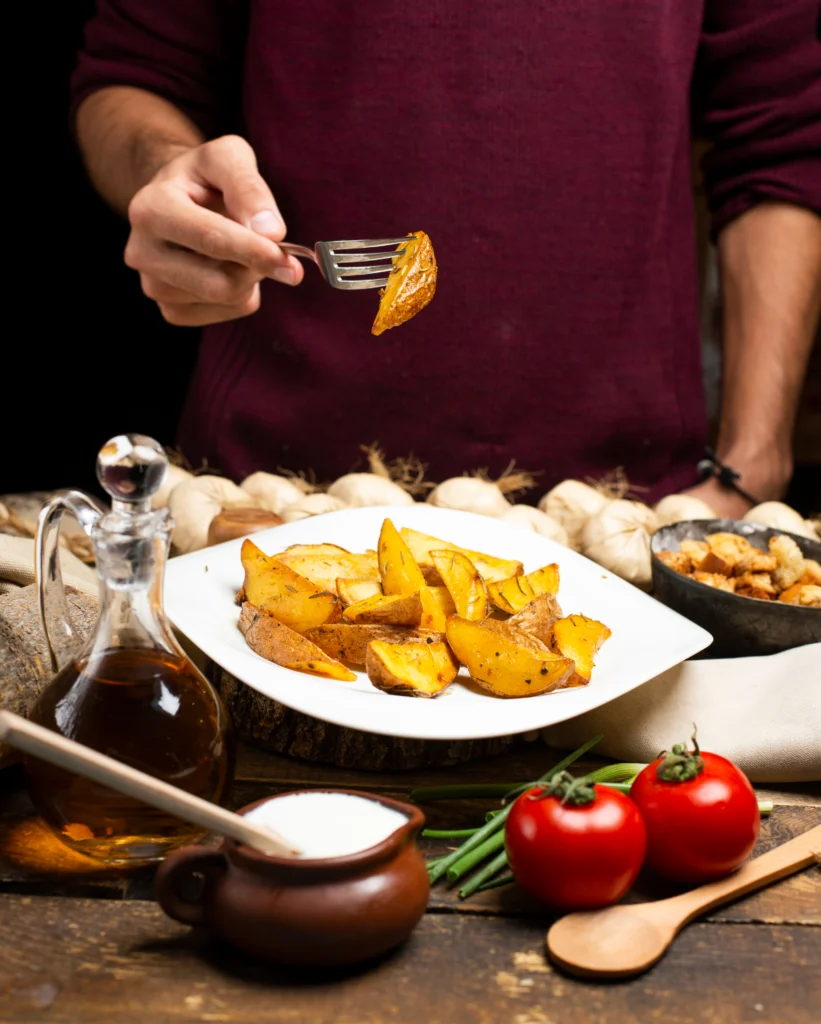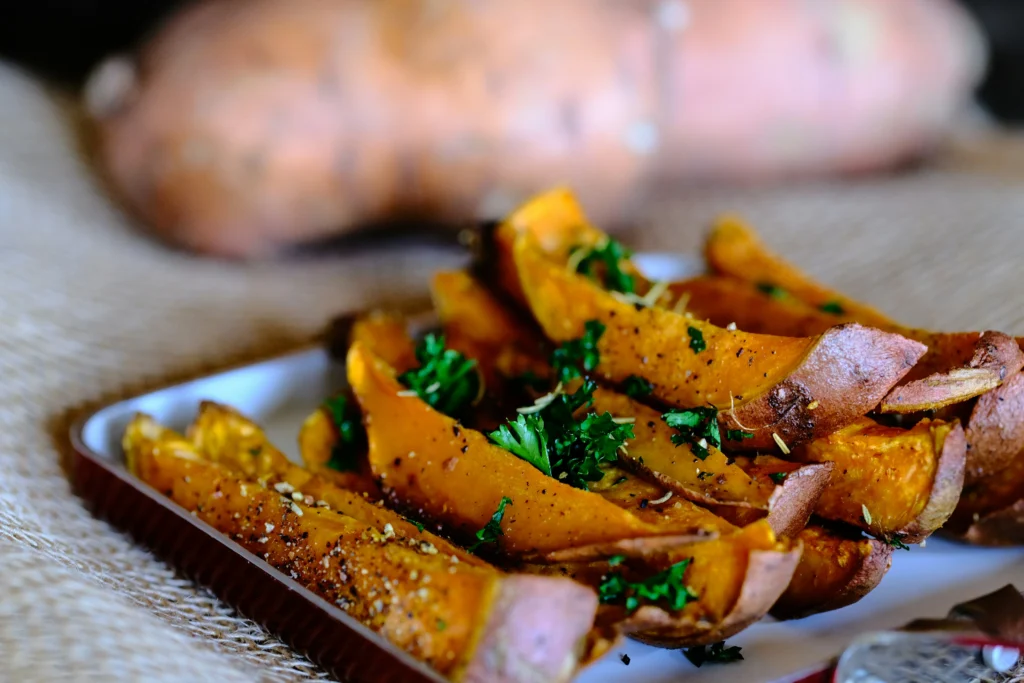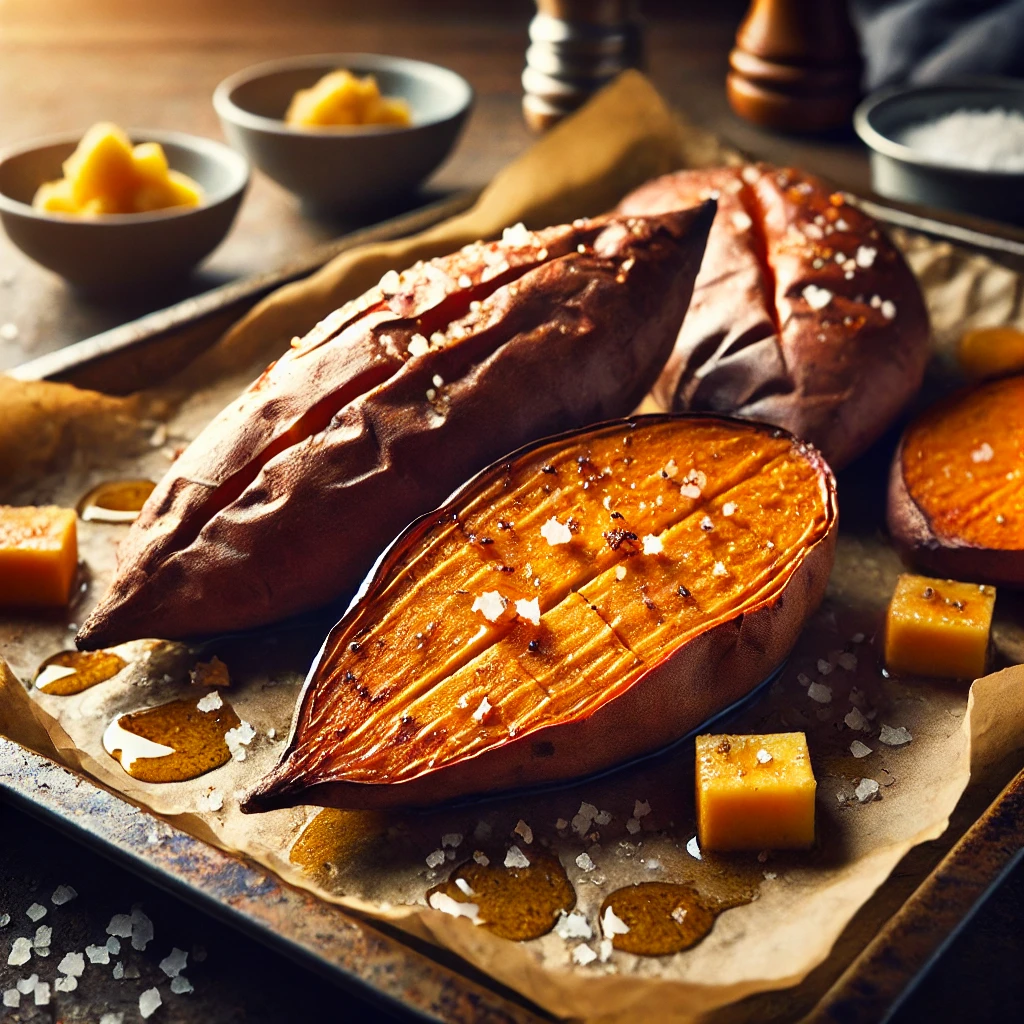Table of Contents
Sweet potatoes are a beloved and nutritious staple in many kitchens worldwide. Whether you’re preparing a simple dinner or making a holiday dish, baking sweet potatoes is one of the most popular and delicious methods. However, a frequently asked question is: How long should you bake a sweet potato at 400 degrees?
This article provides a comprehensive guide on everything you need to know about baking sweet potatoes at 400°F, from cooking times to helpful tips for the perfect texture, flavor, and nutrition. Read on to learn how to master this simple yet satisfying dish.
Why bake sweet potatoes at 400°F?
The ideal temperature for baking sweet potatoes is 400°F. It allows the natural sugars in the potato to caramelize, resulting in a crispy, golden-brown skin while keeping the interior soft and fluffy. This temperature is not too high to burn the outer skin but not too low to undercook the potato, making it the ideal setting for baking.
Compared to lower temperatures, baking at 400°F ensures the potato cooks through more evenly, giving you that perfect sweet, tender texture in every bite.
How Long to Bake a Sweet Potato at 400°F?
The average baking time for sweet potatoes at 400°F depends on the size and thickness of the potatoes. Here’s a general guideline to follow:
- Cook small sweet potatoes (4-6 ounces) for 35-40 minutes.
- Cook medium sweet potatoes (6-8 ounces) for 40-50 minutes.
- Cook large sweet potatoes (8-12 ounces) for 50-60 minutes.
Of course, these times can vary slightly based on the exact size and your oven’s specific characteristics. It’s always best to check the tenderness of the sweet potato with a fork or toothpick before serving to ensure they’re cooked through.
How to Prep Sweet Potatoes Before Baking
Before placing your sweet potatoes in the oven, a little bit of prep work will ensure optimal results. Here’s a step-by-step guide to getting them oven-ready:
- Wash the sweet potatoes: Start by thoroughly washing the skin. Sweet potatoes grow underground, so their skin often contains dirt and debris.
- Dry Them: Pat the sweet potatoes dry with a paper towel to avoid steaming in the oven.
- Poke Holes: Use a fork to poke several small holes across the surface of each potato. This allows steam to escape during cooking, preventing the potato from bursting.
- Season Lightly (Optional): While not mandatory, you can rub the skin with a little olive oil and sprinkle salt for added crispness and flavor.
Baking sweet potatoes wrapped in foil vs. without foil
Some home cooks wrap sweet potatoes in aluminum foil before baking. While this method traps moisture inside and makes the potatoes softer, it also steams them rather than baking them, resulting in a less crispy skin.
Baking without foil, on the other hand, allows the skin to become crispy and caramelized, offering a contrast to the tender inside. If you’re a fan of crispy skin, it’s better to leave the sweet potatoes unwrapped while baking.
How to Know When Sweet Potatoes Are Done
Wondering if your sweet potatoes are ready? Here are a few tips to ensure they are fully cooked:

- Check the texture: A fully baked sweet potato should be tender when pierced with a fork or knife. If the knife slides in without resistance, the potato is ready.
- Look for Caramelization: The natural sugars in sweet potatoes should start to ooze out, leaving a slightly caramelized exterior.
- Internal Temperature: For a more precise method, you can use a food thermometer. The internal temperature of a fully cooked sweet potato should be around 205-212°F.
Tips for Perfectly Baked Sweet Potatoes Every Time
Baking sweet potatoes is simple, but here are some tips to make sure they turn out just right:
- Choose Uniformly Sized Potatoes: Try to pick sweet potatoes of similar size so they cook evenly.
- Rotate the potatoes midway: About halfway through the baking process, flip the sweet potatoes to ensure even cooking on all sides.
- Use a Baking Sheet: Arrange the sweet potatoes on a parchment paper-lined baking sheet. This will catch any drips from the caramelized sugars and make cleanup easier.
- Avoid Overcrowding: If you’re baking multiple sweet potatoes, make sure they’re not touching each other. This allows hot air to circulate around each one, cooking them evenly.
How to Store Baked Sweet Potatoes
If you have leftovers or want to bake sweet potatoes in advance, they store very well. Here’s how you can keep them fresh:
- Refrigeration: Store the cooled, baked sweet potatoes in an airtight container and refrigerate them for up to 5 days.
- You can freeze baked sweet potatoes for up to 6 months. Just make sure to wrap them tightly in plastic wrap or foil and place them in a freezer-safe container.
When reheating, the oven or microwave works well. To keep the skin crispy, reheat them in the oven at 350°F for about 10-15 minutes.
Nutritional benefits of sweet potatoes
Not only are sweet potatoes delicious, but they are also highly nutritious. Here’s a breakdown of some of the health benefits:
- High in Fiber: Sweet potatoes are an excellent source of dietary fiber, promoting digestive health.
- Rich in Vitamins: They are loaded with Vitamin A, which is crucial for eye health, and contain significant amounts of Vitamin C, which boosts immunity.
- Antioxidant Properties: The vibrant orange color of sweet potatoes comes from beta-carotene, a powerful antioxidant that helps protect your cells from damage.
- Low in Calories: Despite their natural sweetness, sweet potatoes are relatively low in calories, making them a healthy option for weight management.
learn more about White Sweet Potato benefits
Delicious Toppings for Baked Sweet Potatoes
Baked sweet potatoes are delicious on their own, but adding the right toppings can elevate them to a whole new level. Here are a few popular topping ideas:

- Classic Butter and Brown Sugar: This simple combination enhances the natural sweetness of the potato.
- Savory Spin: Add a dollop of sour cream, crumbled bacon, and chives for a savory twist.
- Nut butter and cinnamon: For a healthier option, top your sweet potato with almond or peanut butter and a sprinkle of cinnamon.
- Spicy: Drizzle with hot sauce and a sprinkle of smoked paprika for a kick of heat.
- Protein-Packed: Top with black beans, shredded cheese, and avocado for a nutritious, hearty meal.
Conclusion
Baking sweet potatoes at 400°F is a foolproof way to achieve a perfectly tender, caramelized, and flavorful dish. By following the guidelines above, you’ll know exactly how long to bake them, whether wrapped in foil or unwrapped, and how to tell when they’re done. Plus, with all the nutritional benefits and delicious topping options, sweet potatoes are a versatile and healthy addition to any meal.
Now that you know how long to bake a sweet potato at 400 degrees, you can confidently prepare this healthy dish and enjoy the perfect balance of flavor and texture!







